Brutally Honest Living Language Review
 Written byHubert Nagel
Written byHubert Nagel- Read time13 mins
- Comments39
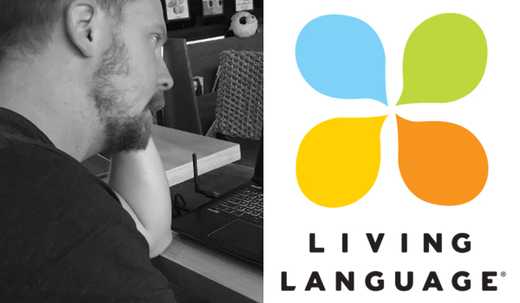
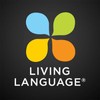
- Good range of languages
- Reasonably inexpensive
- Explicit, grammar-heavy approach
- Inappropriately leveled
- Tutoring is a financial trap
- Inactive forum
The Living Language courses are inadequate, follow an outdated grammar-heavy methodology and are inappropriately leveled. Apart from the wide selection of languages available, there is no justifiable reason to invest in a Living Language course.
NOTE: I’ve recommended a far better, more user-friendly (and less expensive) alternative to Living Language recently.
Select a language here:
Make sure to check out my Essential Language Learning Tools page as well for other resources and recommendations.
I often get asked whether or not I think Living Language is a decent product.
Is it worth the cost?
Up there with the likes of Rosetta Stone and Pimsleur, it’s one of the most recognizable brands on the market for many languages (26 in total if you include the English editions aimed at speakers of other languages) and it also happens to be one of the most popular search terms on my site.
It’s been around for a long time.
But as I said in a previous review: age doesn’t say anything about quality.
The Living Language MethodTM has in fact been around longer than both Rosetta Stone and the Pimsleur MethodTM which, combined with its initial role in teaching languages to diplomats and other US state officials means that it’s assumed by many to be a trustworthy and familiar brand.
This is of course not necessarily true.
Oddly enough, after sampling and reviewing many different language learning programs over the past 5 years for this site, Living Language is one that I had never extensively looked at until now.
I finally decided to sit down this week and meticulously comb through the Online Edition (same content as the Complete and Platinum box sets) of the Arabic version of Living Language to look at the approach of the method itself, the company’s claims and the overall quality of the course material.
This review will take a brutally honest look at the course content, method and value of the Living Language series.
Does it work or is it a waste of money?
Let’s get started.
Living Language’s hyperbolic trashing of competitors is off-putting
And by competitors I mean Rosetta Stone.
If you research the company on its website, the first thing you’ll notice is the opening section of their ‘About’ page which is full of comparisons to Rosetta Stone.
RS isn’t explicitly named but it’s painfully obvious.
NOTE: I am not a big fan or affiliate of Rosetta Stone (see my review here and you’ll see why).
Check out Living Language’s opening paragraphs:
Most of us have played charades at some point or another. As a game, it’s a lot of fun. We watch as someone gestures, pantomimes, and jumps around, trying to guess what it could possibly be that they’re trying to convey. In the game, we expect a lot of ridiculous wrong guesses, and we even like the torturous frustration of having no clue what the answer is. The urge to yell “just tell us the answer!” is all part of the fun. But why would anyone want to learn a language this way?
The Living Language MethodTM is not a game of charades. It doesn’t force adult language learners to try to absorb a new language, like they could when they were babies. It makes use of all the tools that adults have at their disposal to learn efficiently and effectively, without clumsy guesswork or frustration, in order to really learn how to speak a new language.
I’ve bolded the hyperbole for you.
Now, there isn’t necessarily anything wrong with a bit of negative comparative advertising.
In other words, when a company points out the flaws or shortcomings in a competitor’s product it is okay if it’s done the right way.
But I think the fact that the main ‘About’ page of Living Language begins with and is taken up largely by an indirect, hyperbolic attack on an unnamed (yet clear) competitor tells me that they don’t have anything of higher substance to offer.
In contrast, Rosetta Stone’s ‘About’ page is only about Rosetta Stone and what it offers (i.e. no trashing).
As a general rule: if your product is amazing, you don’t need to trash your competitors. Focus on the quality and benefits of your own product and let it speak for itself.
If your product is not remarkable however, you have to resort to denigrating your competitors to boost your own appeal.
The Living Language product options and prices in a nutshell
NOTE: This review will not be covering the ‘Passport’ courses that Living Language offers which are basically just watered down, ‘phrasebook’ versions of their online courses.
I will say however that based on my experience with the full online courses, I would not recommend paying $50 – $75 for the Passport editions which limit you to only 3 months access to their content.
There are basically 4 paid options for Living Language courses (disregarding the Passport courses).
They are:
Essential Edition: This includes the first 10 lessons of the foundational level (very basic foundational material).
Price: $22.99
Complete Edition: Essential Edition + 5 intermediate units + 4 advanced units.
Price: $49.99
Platinum Edition: Complete Edition + 1 year access to the online version (identical content), iPhone app access, online forum access and 12 e-tutoring credits.
Price: $179
Online Edition (subscription): Platinum Edition minus the physical product and iPhone app. Only includes 2 free e-tutoring credits.
Price: $150 (1 year), $75 (6 months), $50 (3 months) and $39 (1 month)
Not all levels/products are available for every language however.
I should point out that only seven of the languages (Arabic, German, French, Spanish, Italian, Japanese and Mandarin) include a Platinum edition and some languages (such as Dutch and Farsi) only offer the Online edition.
E-tutoring is where Living Language’s real financial black hole is
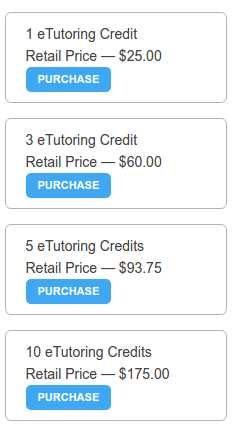
There are a few important points I need to make up front about their deceptive tier pricing and e-tutoring.
In order to get native speaker practice and help with the lesson content, you need to schedule e-tutoring sessions using the booking tool on the Living Language website. These are 30 minute sessions which correspond to each completed lesson.
Just like Rosetta Stone’s live-tutoring, these are highly restricted and controlled practice sessions that can include up to 4 people at any given time.
You do the math: 4 students + 1 teacher in a 30 minute session = at most about 6 minutes of actual speaking time per student.
6 lousy minutes!
This 6 minutes of practice will set you back a ludicrous $25 (that’s the cost of each e-tutoring credit).
It doesn’t take a genius to realize that this is not a wise way to spend your money.
To give you an idea: you can use a service like italki and potentially get 2 or 3 hours of one-on-one Skype practice/tutoring for the same price!
And you wouldn’t be restricted in what you can talk about.
But the Living Language course content is set up in such a way that people who are new or not savvy enough will need some direct help and therefore continue to buy more credits. The trap then is that every time you need clarity on something or want to practice what you’ve learned, you’ll go and buy another 6 minutes for $25.
I’m also not sure why anyone would choose the Online edition over the Platinum edition.
The Online edition offers the exact same content as the Platinum (for almost the same price) except you receive no physical product (i.e. books and CD’s).
You also have a time limitation on your subscription which means that once your time is up, you can no longer access what you’ve paid for. It makes no sense whatsoever to buy the Online course with a time limitation when the Platinum edition comes with books and CD’s that don’t expire.
For the Online edition there’s also no mobile app access and you only receive 2 e-tutoring sessions (as opposed to 12 in the Platinum edition).
To take it a step further – both the Online and Platinum editions offer no additional value to the Complete edition as they all contain the same lesson content overall.
There’s a $129 difference between the Complete edition and the Platinum edition; the only clear reason for this being the included e-tutoring credits ($300 worth of 30 minute sessions which as I pointed out above, give you approx. 6 minutes each to practice).
In other words, if you’re determined to buy a Living Language course then my advice is to only get the Complete edition and not waste $129 on the Platinum or Online versions (use italki for cheap e-tutoring instead).
Living Language Arabic makes the same mistake as Rosetta Stone
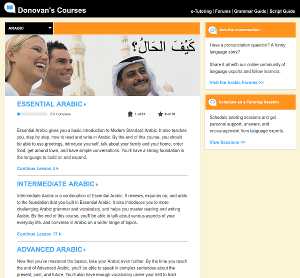
Just a specific point on the Arabic edition of Living Language.
If you’ve read my Rosetta Stone review, you may remember me mentioning that the worst mistake they made with RS Arabic (rendering it practically useless as a learning tool) was choosing to use Modern Standard Arabic instead of a spoken dialect.
Living Language is the same – only it has even more atrocious dialogue than RS.
Listening to the robotic, formal dialogues in the Living Language course is a painful ordeal to sit through.
Nobody anywhere speaks MSA as a native language (see here). It’s not a naturally spoken language in any part of the Arab world. Since it’s only used in formal situations (e.g. politics), it makes no sense to offer a course that teaches Modern Standard Arabic as a way to converse about everyday topics.
The Living Language website states:
Whether you want to visit the souks of Dubai, connect with new friends, or order shawarma with authenticity — Living Language has the programs to learn effectively and efficiently.
Nonsense.
Modern Standard Arabic (and therefore Living Language) will not adequately prepare you for any of these real life situations.
NOTE: I will add that the only comparable online course I’ve seen that actually teaches a spoken dialect with natural (not robotic) dialogue is Rocket Arabic (review here).
The Living Language MethodTM and course explained
NOTE: I’ll be commenting on the Online edition which is what I sampled for this review.
The content is the same for Complete and Platinum but some web interface features I mention obviously won’t apply to those who purchased the physical product.
What’s worth remarking on here is that Living Language really emphasizes using one’s native language as a “bridge” to learn foreign languages.
Their approach entails explicit instruction of grammar.
This is along similar lines to other well-known methods such as Michel Thomas and Pimsleur, all of which emerged decades before communicative language theory rose to prominence.
In other words, it follows an outdated and deprecated methodology from a bygone era.
Language instruction (generally speaking) has moved far away from explicit instruction over the past two decades and more toward implicit methodologies that emphasize interaction.
Both in terms of classroom teaching styles and products for self-teaching, explicit grammar instruction has become a thing of the past (also see my article on why you don’t need to study grammar to learn to speak a foreign language).
The Living Language edition that I sampled is structured as follows:
Essential: 10 lessons covering basic topics such as ‘people and family’, ‘numbers’, ‘restaurant’, ‘work’ and ‘entertainment’.
Intermediate: 20 lessons in 5 units covering the same topics from Essential level.
Advanced: 16 lessons in 4 units covering the topics ‘shopping’, ‘sports and leisure’, ‘work and school’, and ‘doctors and health’.
Firstly, I feel that the designations of the levels are inaccurate.
None of the “advanced” topics are actually advanced by any means and the same is true of the “intermediate” topics (e.g. shopping and restaurant). The grammatical concepts do increase slightly in difficulty however but the designations are not appropriate.
Perhaps a more appropriate way to name these levels would be Absolute Beginner, Beginner, Lower Elementary or something to that effect.
The reality is: by the time you finish the “Advanced” lessons, you’ll be no better equipped to communicate than someone who flicked through an in-flight phrasebook.
Most of the individual lessons are structured like this (or very similar):
1) Vocabulary 1
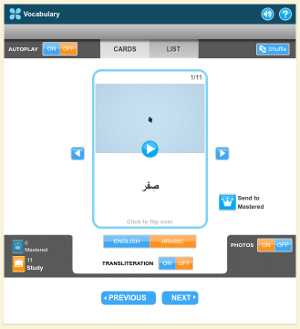
Words and phrases are introduced using an inbuilt flashcard app.
I admit that I do like the inclusion of images and the ability to toggle various features such as transliteration and a vocab list but it’s only a flashcard deck with a small handful of words and phrases (something I’d prefer to use Memrise for).
2) Grammar explanations
These are literally pages that have been lifted straight out of an old textbook with tables of rules and brief explanations of various grammar points. Unclear explanations overall and visually unattractive.
The only good added feature in the Online version is that you can click various words in the tables to hear how they’re pronounced.
3) Vocabulary 2
More flashcards just like Vocabulary 1 (I’m not sure why they split these actually).
4) Grammar explanations
Some additional grammar explanations.
5) Conversation
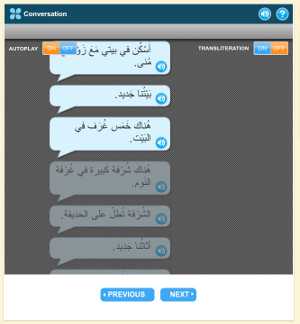
This is the only part of the lessons that has at least some potential as far as natural language dialogue goes. They play a short conversation in the target language which you can toggle back and forth to English in the Online version.
Unfortunately as I mentioned above, the Arabic dialogue is horrendously bad and they’re in a dialect that nobody speaks as a native language. Some of the other languages I listened to sounded very robotic as well.
6) Games
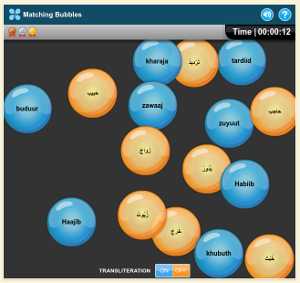
When I wrote my original review of Rocket Languages, I made some criticisms about the uselessness of the games they had (Rocket has since removed them).
Living Language includes them too and even uses them as a selling point.
The games in the Living Language course are utterly pointless and provide little to no educational benefit (e.g. clicking floating bubbles, memory match, etc.). They’re low quality, time-wasting distractions that are just there to add extra sale value.
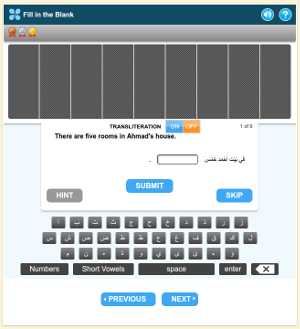
NOTE: One additional thing I noticed with the Arabic course specifically is that the ‘Fill-In’ activities require you to input tashkeel/7arikat (vowel diacritics) when typing words.
If you don’t input these 100% accurately, it’s marked as completely wrong.
This is frustrating for two reasons:
1) Tashkeel isn’t necessary or used in most Arabic writing and 2) Living Language could and should at least highlight ‘partially correct’ answers like Rocket Languages does so that if one letter is missed or tashkeel is omitted, what you got right is highlighted.
So is Living Language worth the investment?
Just looking back over this review now I can see that it’s almost entirely negative and that’s a shame really (I try to keep these reviews as balanced as possible).
Apart from the wide selection of languages available, I just don’t see a justifiable reason to invest in a Living Language course (especially the Arabic one).
Even the forum which is used as a selling point (touted as access to “an online community of language experts”) is mostly inactive.
Granted that Living Language is significantly cheaper than the other big name language product brands (e.g. RS, Pimsleur and Michel Thomas) but in all honesty, I think it’s still overpriced for what it is.
The content is inadequate, follows an outdated grammar-heavy methodology and is inappropriately levelled.
The Living Language e-tutoring service is nothing but a financial black hole and you’d get far better value out of personalized, one-on-one Skype lessons via italki.
If you are determined to buy a Living Language course, my advice is to go no higher than the $49.99 Complete Edition as the Platinum and Online editions are an excessive waste of money.
Have you/do you use a Living Language course? What are your thoughts?
Comment below!
 Grab the link to this article
Grab the link to this article